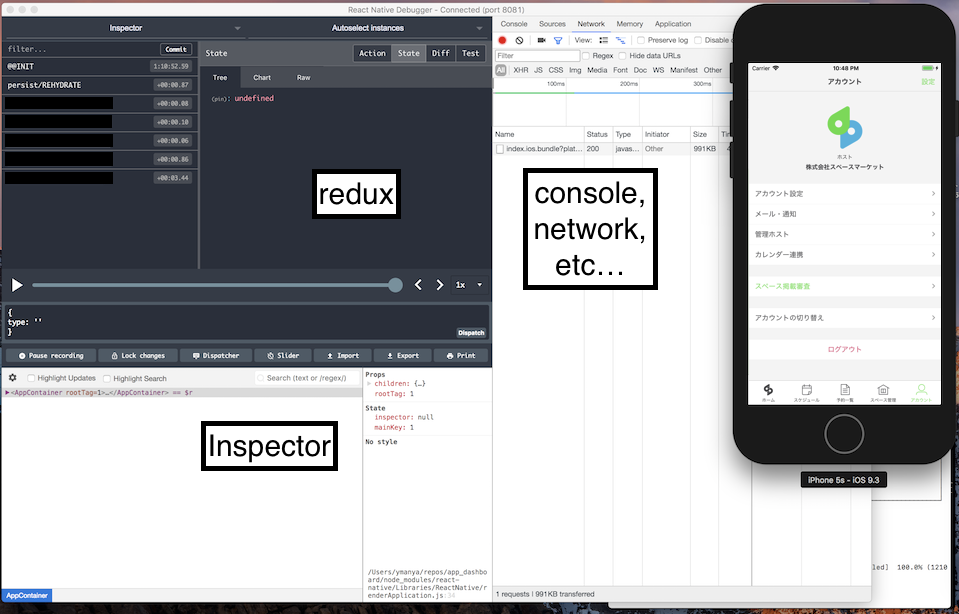- React Native Debugger
- React Native Debugger Open
- React Native Debugger App
- React Debugger Chrome
- React Native Debugger Download
The very first step to start development in React-Native is to install the right tools to setup the environment correctly. I’m working on MacOS Catalina and I already have Xcode 11 installed on my machine which is one of the pre-requisites to run the iOS App.
Install the following dependencies for React-Native:
React Native combines the best parts of native development with React, a best-in-class JavaScript library for building user interfaces. Use a little—or a lot. You can use React Native today in your existing Android and iOS projects or you can create a whole new app from scratch. To run and test your React Native application on the android device you need to set up the Android Environment. Setting up your development environment in Mac OS is easy but can be somewhat tedious if you’re new to Android development. The latest version of React Native Debugger is 0.7 on Mac Informer. It is a perfect match for the Developer Tools category. The app is developed by Jhen-Jie Hong. 2 options exist. Remote debug: this would go over network, so it can be laggy. Run app on device (install it whilst its plugged in) Shake device (Android devices need to be vigorously shaken); Press settings on the dev menu, and under Debugging, press Debug server host and port for device; Enter your debug server's IP address and port (usually 8081 unless you changed your settings of the. Sudo npm install -g react-native-cli. For iOS the easiest way to install Xcode is via the Mac App Store. And for android download and install Android Studio. If you plan to make changes in Java code, we recommend Gradle Daemon which speeds up the build.
React Native Debugger
NodeJS: https://nodejs.org/en/download/
The recommended way to install Node is using Homebrew from your Terminal:
Watchman: In react-native, Watchman watches the source code for any changes and rebuilds them.
Install XCode from App Store.
Cocoapods: This is the Dependency Manager for iOS & Mac projects.
This requires you to enter system password.
Install Visual Studio Code for Mac from here. You might face issues on Mac OS Catalina to run VS Code due to Notarization requirements. You can check out this post for more details.
Create the folder inside say your Documents folder on your Mac as below:

Open VS Code and open New Terminal and type the following command to create a new React-Native App:
Come back to the MyApp folder and run the below command to run your App in the iOS simulator:
This will install and launch the App in your iOS simulator. The first time might be very slow. It might be helpful to launch your simulator beforehand.
Running on Android:
Install the Android Studio from here, which will install the Android SDK and the required emulator. I’m using the Android 10 emulator for Pixel XL.
Open the MyApp folder in VS Code to make further changes.
Issues
Running the Android App causes issues while launching the Emulator. The error message is: React Native adb reverse ENOENT
Starting with macOS Catalina, your Mac uses zsh as the default login shell and interactive shell. You can make zsh the default in earlier versions of macOS as well.
So on your Mac:
1 – Open your .zshrc file:

2 – if .zshrc file doesn’t exist, you need to create one & open again(Step 1)
3 – Add this to your .zshrc file
4 – Save and close

5 – Compile your changes
& make sure to restart your terminal.

Run the command in the Terminal and you’ll see something like below if everything is fine:
Android Debug Bridge version 1.0.41
Version 30.0.0-6374843
React Native Debugger Open
Installed as /Users/<username>/Library/Android/sdk/platform-tools/adb
React Native Debugger App
You can also run the code in your VS Code Terminal and see the same output.
React Debugger Chrome

React Native Debugger Download
The path to Android SDK is available in the Configure button -> SDK Manager (at the bottom right) when you launch Android Studio.